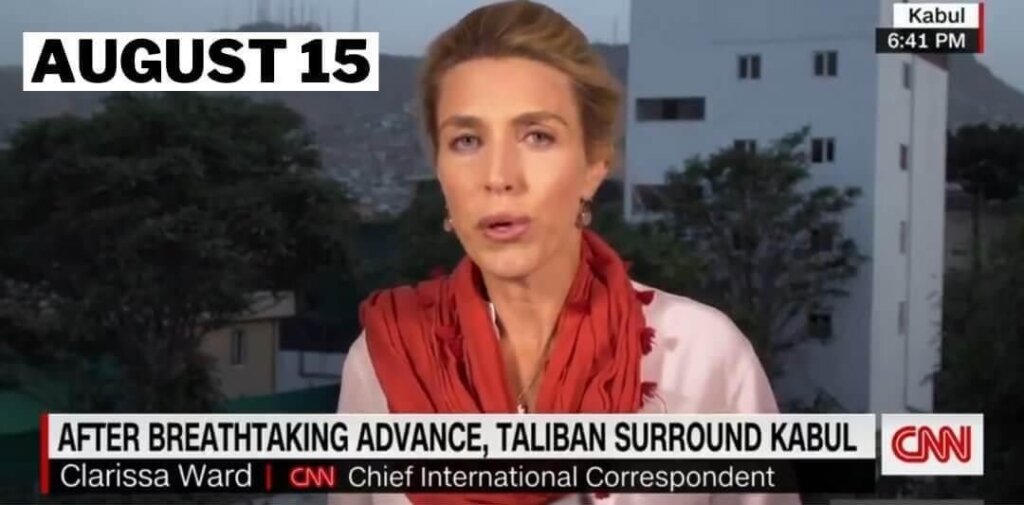Afghans in the 1960s had a thriving music and hippie scene before the Taliban came to power.
In the 1960s, many Afghan women wore heels and had bob haircuts, making them look more like the rest of the world. The Taliban seized power, and suddenly, they were forbidden from working, studying or displaying their faces in public. Music was forbidden in its entirety. The list goes on and on. Check out these intriguing old images of Afghanistan to show what the fanatics have wiped out.
- Local women used to wear short skirts and high heels.
Afghanistan has been a divided society for many years. In the cosmopolitan areas, things began to westernize in the 1950s. While modernism was a tough road for some, huge cities like Kabul took major steps forward.

- Adult women must wear burqas after the Taliban took over and mandated them.
It’s a real shame. A thousand years passed in an instant when the Taliban came to power in 1996. In addition to the hijab, all women were required to wear burqas. The garment is actually from India, not Afghanistan, as many people believe. Taliban, on the other hand, liked it. To protect themselves from being beaten or killed, females were fully clothed from head to toe. Their faces had vanished. In public, they were only able to view via a mesh screen.

- It’s no longer possible to find ancient Buddhist relics in Afghanistan.
Afghanistan, as conceive of it today, is one of the world’s most pious Muslim countries. What if it wasn’t always like this? Islam, on the other hand, is a far younger religion than Christianity. Many monks meditated in Afghanistan’s caves, which led to the construction of massive monuments. Afghanistan once had a strong Buddhist presence, with a large Buddhist population.

- ‘The Taliban destroyed this Giant Statue Because It Was an Idol.’
When they could, the Taliban began removing graven pictures. It was necessary to destroy any artwork depicting other religions. But it required a lot of tries. Qudratullah Jamal, the Taliban’s Information Minister, remarked at the time: “There’s a lot more to this destruction project than you might believe. The statues can’t be knocked down by shelling because they’re cut into a cliff. “If you’re interested in learning more.

- Afghans Were Not All Modern in 1960, but Things Were Changing
Afghanistan is probably only known in the West as a war-torn country. Landscaping and aesthetics have been negatively affected by invasion after invasion, it is undeniable. Afghanistan, on the other hand, has had a lot going on in the past. A succession of monarchs had improved roads, and banks and universities had been established.

- For the sake of modesty, the Taliban publicly burned T.V. sets and film reels.
It’s not easy to eradicate foreign influences from your culture. Nevertheless, is it possible? According to this picture of a pile of burning televisions, the Taliban went all-out. A Taliban fighter gave an American journalist some at the time: “For the sake of the Afghan people and Afghanistan, we’re destroying television sets. If it works for you, it won’t work for us.”

- Taking a stroll was a perfectly acceptable activity for women.
Kabul, Afghanistan’s 3,500-year-old capital, has long been a hub for politics, education, and culture. It was also noted for its world-class bazaars. Visitors may always rely on seeing, smelling, and hearing something new. This outdoor bazaar, Pul-e Khishti Bazaar, was one of the world’s oldest and most attractive. There was something for everyone, from colorful apparel and traditional rugs to freshly butchered meat. All of us, even women

- A male guardian was required for women to leave the house on their own.
There was more to it than just a change in attire. At all levels of society, women were subjected to harsh social conventions. Under the new law, women wearing the burqa were no longer allowed to leave their homes alone. An escorting man was required, which may be their minor kid.

- It used to be that Afghan women were allowed to work and be members of the political council.
Kings controlled Afghanistan long before the Soviets, Americans, or Taliban. There have been several different constitutions over the country’s history. Afghanistan’s political situation was improving, and women’s and men’s rights were expanding. Females were first allowed to work and learn more than 50 years ago. They could also vote and even run for political office at that time! All around the country, women serve in local tribal councils.

- Modern reforms prohibited the marriage of girls under the age of sixteen.
About a century ago, King Amanullah Khan ruled Afghanistan. Seine measures towards modernization began in 1919. His new constitution granted equal rights for men and women in a wide range of traditional spheres of life, including marriage and divorce. As a result, child marriage was outlawed. In practice, this meant girls had to be 16 or older, and boys had to be 18 or older.

- As young as 12-year-old Taliban child brides have been recorded.
In Afghanistan, many villagers are worried about child brides when the Taliban regained authority. As a result, the practice has persisted for generations, defying attempts to modify it. Although the Taliban’s ideology does not condemn the idea, there have been allegations of militants putting pressure on local villages to turn over their daughters to the Taliban’s control Men were promised a young wife as a recruiting tool. Are there consequences for families who do not comply?

- The Love Story of an Afghan Couple from the 1960s
This couple’s love is plain to understand. Those of us from the West are used to seeing a tall, beautiful man. Ses gorgeous wife, who has a bob with bangs, has his arm wrapped over her shoulders as he speaks. Even though they appear to be well-dressed, they appear to be having a good time together in the vast outdoors of Afghanistan. Isn’t it wonderful how natural it is? For many years, this was a common sight, especially in the 1960s

- A Different Kind of Couplehood Under the Taliban
As a couple, they’ve decided to go out and have some fun in public! Taliban have a lot to say about public behavior now that these two have left the family.

- This reporter was on the ground as the Taliban retook control in 2021.
Afghanistan is about to enter a new phase, yet it’s an old phase. Media outlets from around the world were present when the situation began to deteriorate in 2021. During the final 24 hours before the U.S. evacuation, CNN aired several compelling stories. It was in real-time when Clarissa Ward recognized what had happened.

- Taliban beat men whose beards were too short.
That’s for sure; they did. According to reports, in anticipation of the Taliban taking over Afghanistan in 2021, men began growing out their beards. This could be because people remember what happened the last time around in 1996. Beards that were too short were routinely beaten on the street. In their eyes, Bin Laden’s beard embodied perfection. This was not the only thing that was forced on men, regardless of whether or not they were religious.

- It was over when the Taliban showed up at the palace in 2021.
In August 2021, the world was astonished to find the Taliban’s top officials in the Afghan presidential palace. Being in this chamber meant just one thing: The Afghans were gone. When it comes to the Afghan military’s ability and willingness to hold its own country, President Joe Biden says, “another year or five more years of U.S. military presence would have made no difference.”

- In terror, thousands of people crowded into planes to escape them.
Unarmed and barefoot, thousands of people tried to board a single American airliner. Getting away from the Taliban was more important than the destination. During the fall of Kabul, more than 600 people were evacuated by a U.S. Air Force C-17. They died in a flash. The video quickly went viral.

- Students used to be allowed to express themselves.
The world views Afghanistan as a country that is somehow linked to Osama bin Laden. Is that it? That’s a long way from being true. The majority of Afghans were once non-fundamentalist. In the 1960s, students went to Kabul University, went to the movies, and marched in political protests to express their political views. Neither men nor women were exempt from this rule. To help us remember a different age, a demonstration has been captured in color.

- However, the Taliban did not restrict speech to a bare minimum.
The Taliban established Quranic law in 1996. Everyone who broke Islamic law was punished severely by the gang. Homosexuality, adultery, and blasphemy were all punishable by death.

- Traffic jams weren’t as common in Afghanistan because the country was still developing.
In the past, Afghanistan was a predominantly rural country. Around the turn of the century, things began to shift. For citizens who now possessed cars, the 1960s witnessed the construction of a nationwide road network. Unfortunately, the battles of the 1980s and 1990s left a trail of destruction. That’s a long time in the future for this photo. In the meantime, let’s look back on a few antique automobiles, shall we?

- After the president fled, Afghans blockade all roads in an attempt to flee
A lack of highways seemed to be a major factor in the recent fall of the Afghani administration. That would have been more than enough on a typical day to get to any of the country’s dozens of airports. To be sure, everyone needed a common course to follow when the abrupt 2021 crisis hit. Kabul airport is engulfed in turmoil as Afghans flee the Taliban. Is everyone safe and sound on their flights?

- Twenty-two. Girls Used to Study at the University Alongside Guys Their Age
According to one researcher: “In 1960, there were 175,600 students in 1,110 elementary schools, of whom 19,000 were girls. Some 11,300 students, of whom 2,500 were girls, attended seventeen middle schools and eighteen secondary schools [the middle schools being grades seventh through ninth].

- Twenty-three. Under the Taliban, Universities Were Bombed
The Taliban ruled nearly 75% of Afghanistan until the Americans invaded in 2001. As a result of the violence that erupted during this period, children, instructors and school buildings were targeted. A large number of educators were executed, and schools were destroyed. University buildings were also targeted. It’s no wonder people were afraid when there were hundreds of attacks every year. Throughout the provinces, many schools were shuttered, ensuring the safety of those who needed it most. It wasn’t until 2001 when the Taliban were driven out of Afghanistan, that education resumed.








